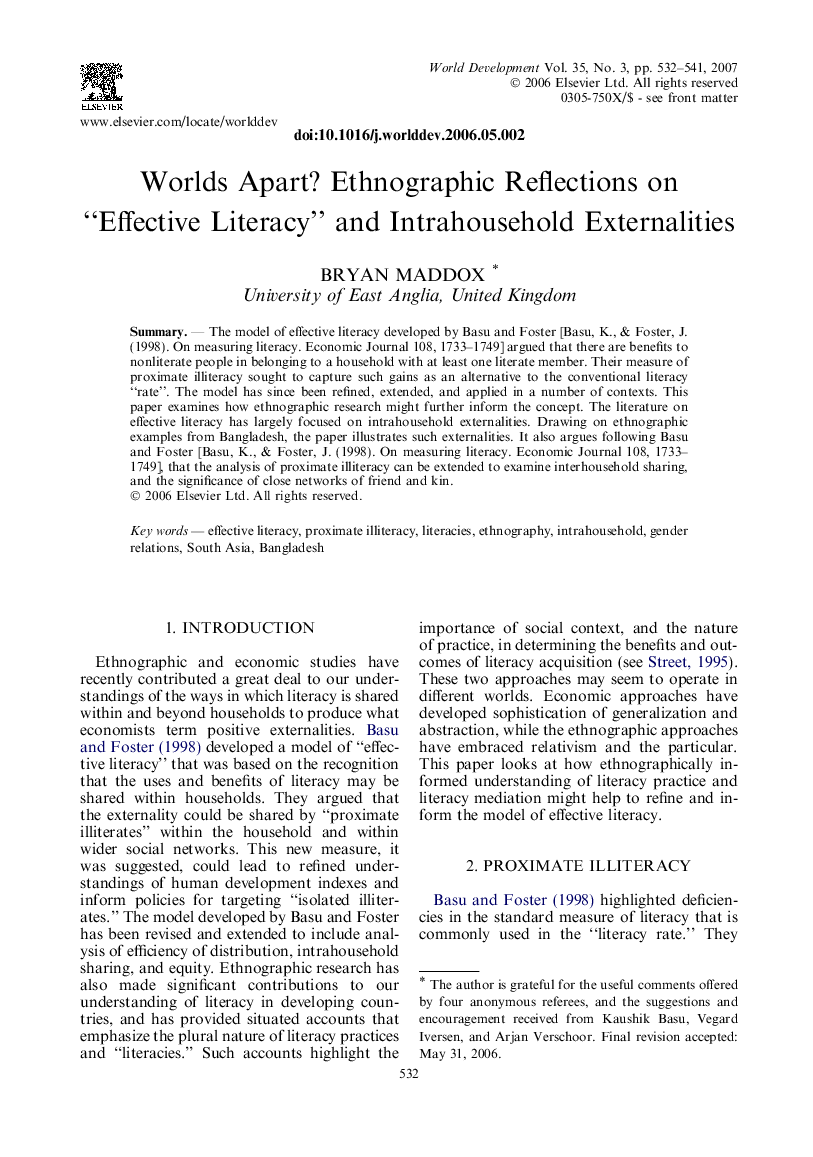| Article ID | Journal | Published Year | Pages | File Type |
|---|---|---|---|---|
| 989763 | World Development | 2007 | 10 Pages |
SummaryThe model of effective literacy developed by Basu and Foster [Basu, K., & Foster, J. (1998). On measuring literacy. Economic Journal 108, 1733–1749] argued that there are benefits to nonliterate people in belonging to a household with at least one literate member. Their measure of proximate illiteracy sought to capture such gains as an alternative to the conventional literacy “rate”. The model has since been refined, extended, and applied in a number of contexts. This paper examines how ethnographic research might further inform the concept. The literature on effective literacy has largely focused on intrahousehold externalities. Drawing on ethnographic examples from Bangladesh, the paper illustrates such externalities. It also argues following Basu and Foster [Basu, K., & Foster, J. (1998). On measuring literacy. Economic Journal 108, 1733–1749], that the analysis of proximate illiteracy can be extended to examine interhousehold sharing, and the significance of close networks of friend and kin.
